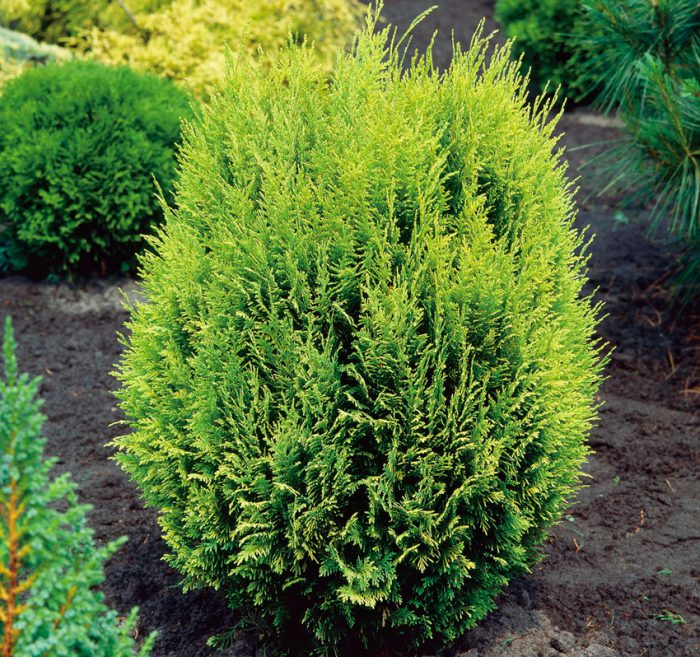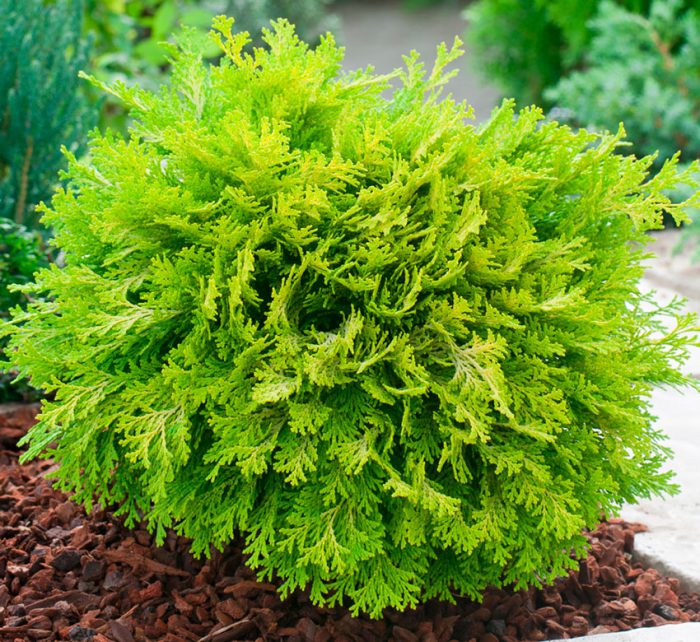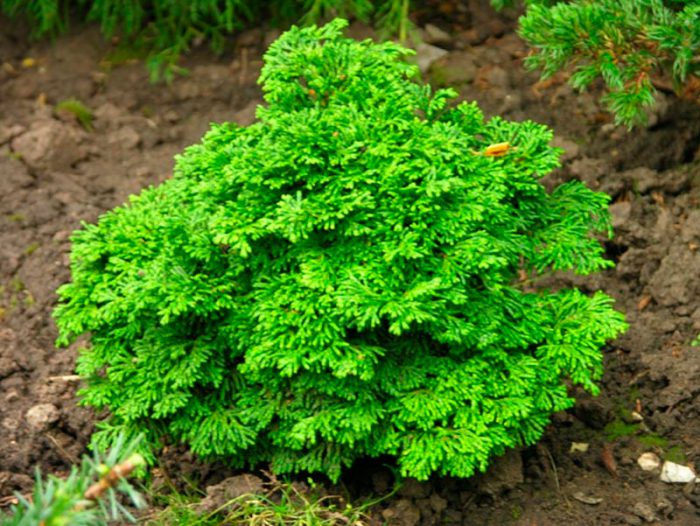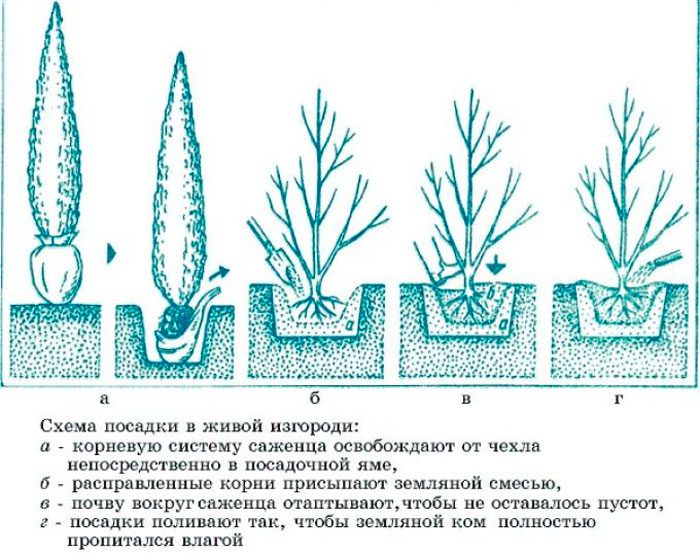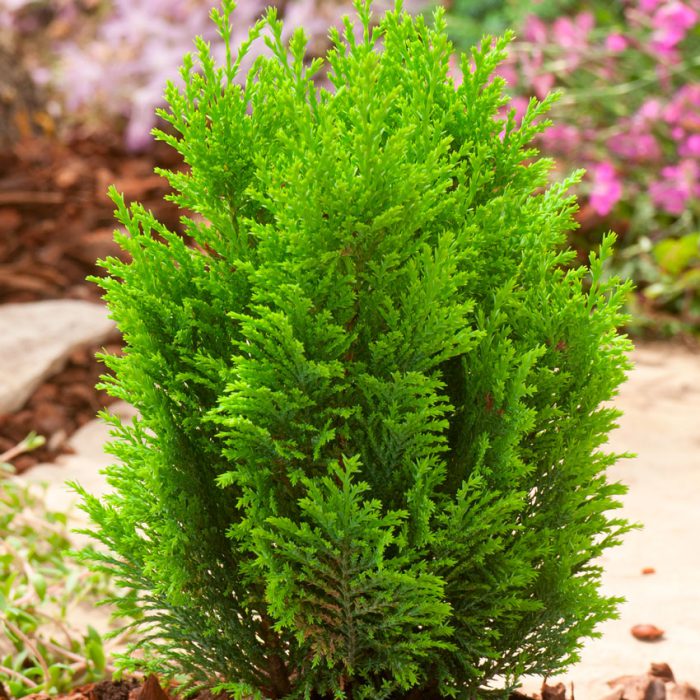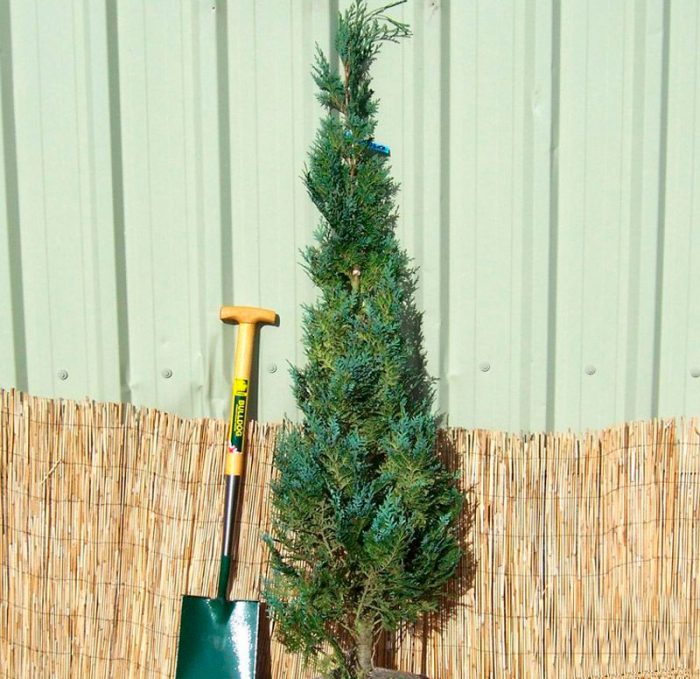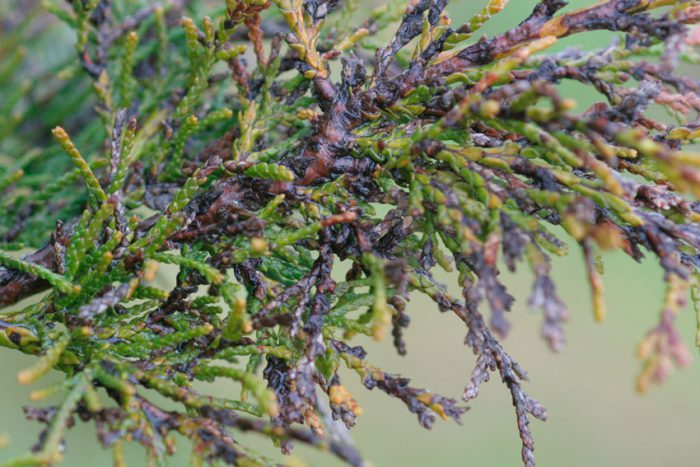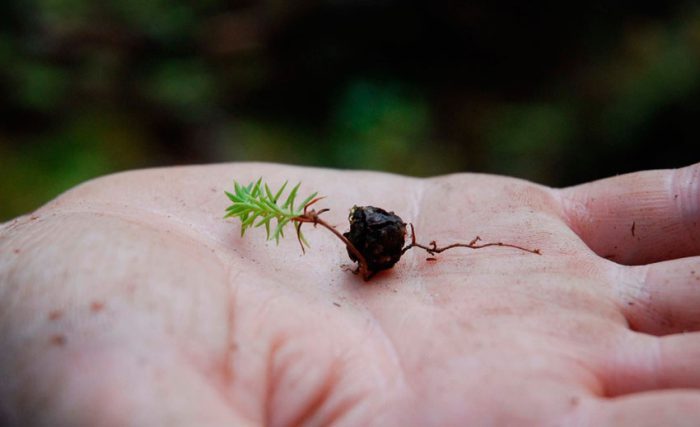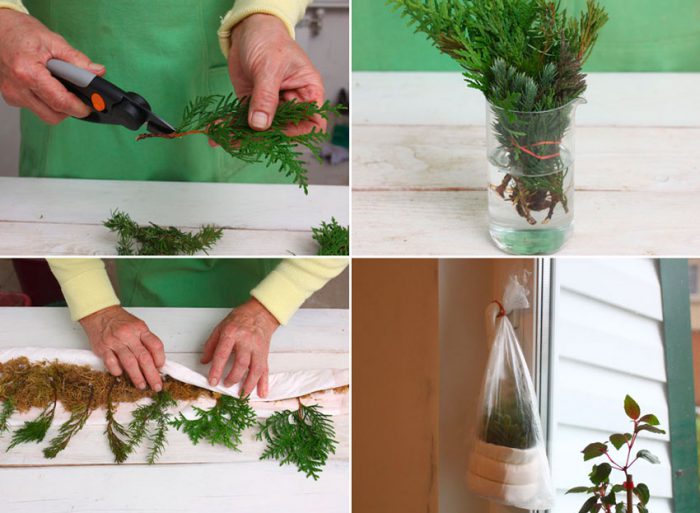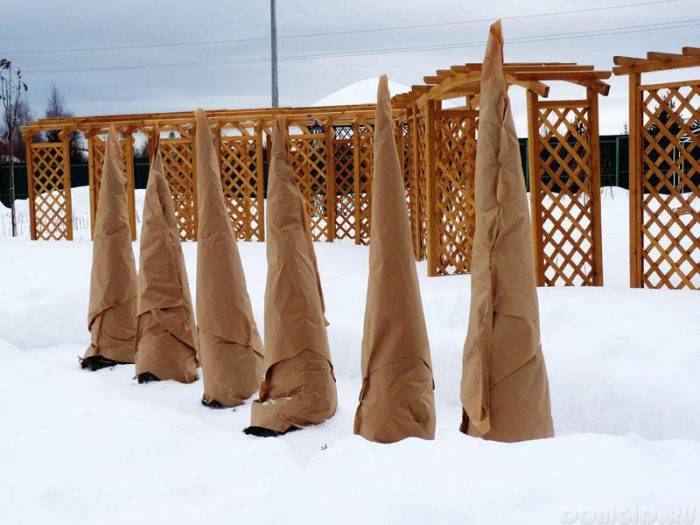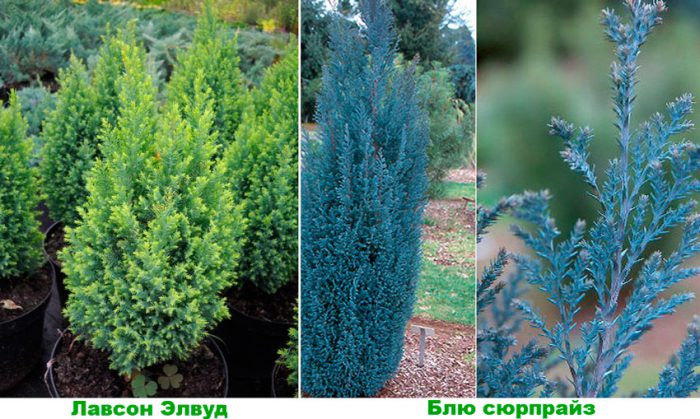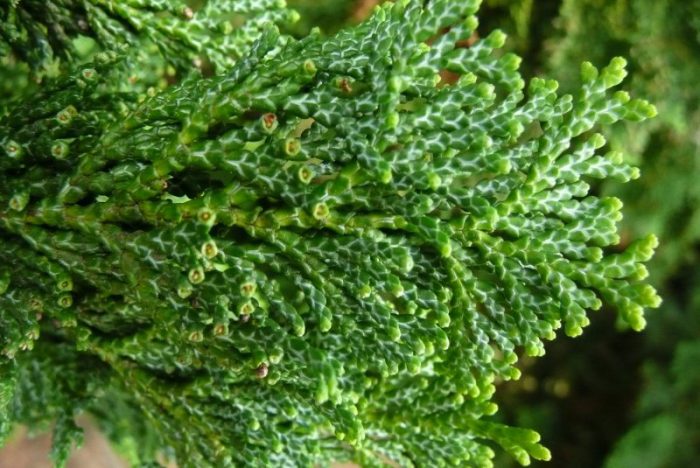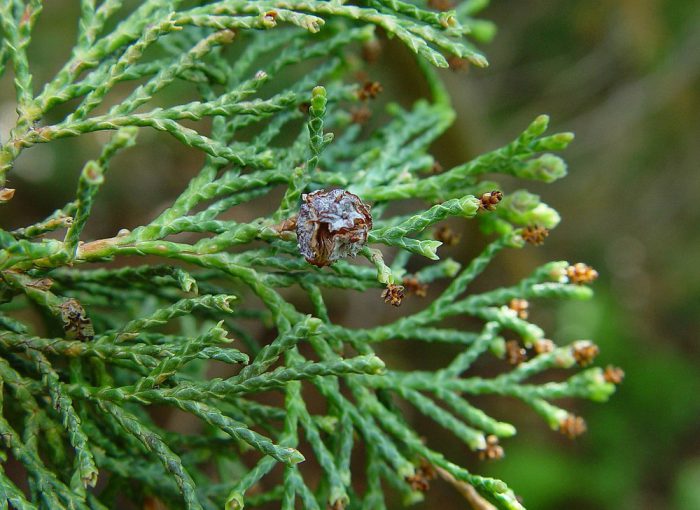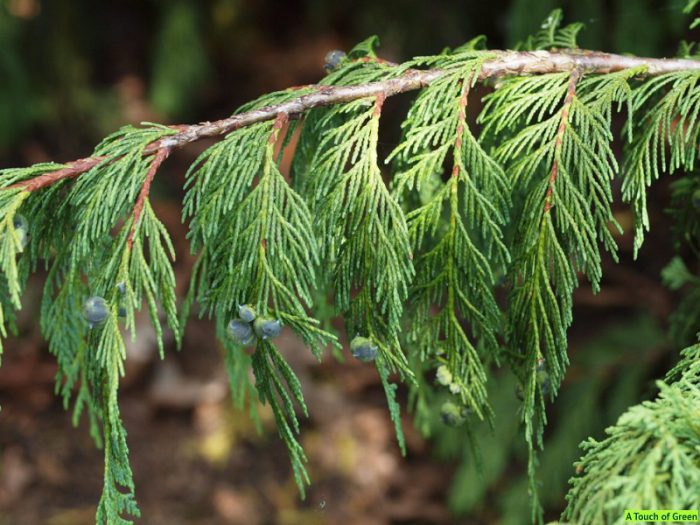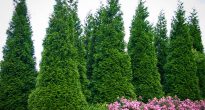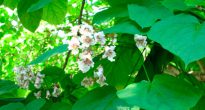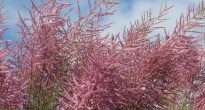Cypress (Chamaecyparis) is an evergreen coniferous tree that belongs to the cypress family. This genus unites 7 species, and there are also several hundred cultivars. Under natural conditions, the height of such plants in some cases reaches 70 m. The cypress looks very similar to the cypress, so these plants are often confused. Cypress differs from cypress in that its branches are smaller and flatter. This tree also has a pyramidal crown, which is very similar to the thuja. The native land of the cypress is North America and East Asia. It began to be cultivated at the end of the 18th century. Cypress is cultivated both in the garden and at home.
Content
Features of the cypress
Native to North America are such species of this plant as: Nutkan cypress, thuose and Lawson. Natives of East Asia are such species as: blunt cypress, mourning, pea and Formosan. In the wild, these plants are very tall and have small, lush, scale-like needles, as well as round cones that are much smaller than cypress and contain fewer seeds. By the way, Japanese and North American species of this plant have a higher frost resistance compared to cypress. So, they can winter in mid-latitudes without shelter. But on dry periods in the summer, such plants react more negatively than cypress.
Such a tree has a cone-shaped crown, while the long branches are drooping or open. The trunk surface is covered with light brown or brown bark, which consists of small scales. Pointed, tightly pressed leaf plates can be dark green, smoky blue, greenish yellow, or green. Young specimens have needle-shaped leaf plates, while adults are scaly. The diameter of the cones is 1.2 centimeters, while the seeds ripening in them are germinating already in the year of planting the seedling.Recently, Japanese, European and American breeders have created more than two hundred cultivars, which differ in size, shape, crown color, etc.
Planting a cypress
What time to plant
For planting a cypress, it is recommended to choose a site that is located in partial shade, but lowlands should be avoided, since cold air stagnates in them. Species with light blue or green needles need relatively less light than those with greenish-yellow needles. The soil on the site should be saturated with nutrients, well-drained is best if it is loamy and in no way calcareous. A seedling is planted, as a rule, in the spring time in April, after the soil warms up well, but it is recommended to prepare a hole for planting in the autumn, so the soil will have time to settle properly. To do this, you need to make a hole, the depth of which should be 0.9 m, and the width - 0.6 m.At its bottom, a drainage layer 0.2 m thick should be made, which should consist of sand and broken brick. Then the hole should be covered ½ part with a soil mixture consisting of humus, sod land, sand and peat (3: 3: 1: 2). In winter, this soil mixture will rot and settle, and with the onset of the spring period it will warm up relatively quickly. In the event that you will plant more than one cypress seedling, then it should be borne in mind that the distance between them should be at least 100 centimeters, and preferably more. This is because in this plant the root system grows horizontally.
How to plant
Most often, ready-made cypress seedlings are planted, which can be bought in a garden nursery or a special store. Before planting a seedling, you need to well water the hole for planting, and also shed a clod of plant earth using a root solution (1 package of product for half a bucket of water). After that, the plant must be lowered into the center of the hole and gradually covered with soil mixture (see its composition above), combined with 0.3 kg of nitroammofoska. The root collar of the seedling after planting should be 10–20 centimeters above the soil surface, because the soil will surely settle. The planted tree must be well watered. After the soil has settled, it will be necessary to add more soil, so that the root collar is flush with the ground surface on the site. Then the trunk circle must be covered with a layer of mulch, and the cypress tree should be tied to the support.
Cypress care
First of all, you need to pay attention to the fact that this plant needs systematic watering, which should be carried out once a week, about a bucket of water is taken for one bush. However, if there is a long dry and hot period, then the frequency and abundance of watering should be increased. An adult plant must be abundantly sprayed once every 7 days, and young specimens are sprayed daily. In the event that the surface of the trunk circle is covered with a layer of mulch (peat or wood chips), then watering should be done after the top layer of soil dries up. In the event that the trunk circle is not sprinkled with mulch, then every time after the tree is watered, it is necessary to weed and loosen the soil surface by about 20 centimeters in depth.
A couple of months after planting, the seedling must be fed with a complex fertilizer, while the concentration of the nutrient solution should be half of that recommended for an adult specimen. Top dressing of adult specimens is carried out 1 time in 2 weeks until the second half of July, while using a complex mineral fertilizer. Experts advise choosing a fertilizer such as Kemira for conifers, while before watering the plant, from 100 to 150 grams of a substance is scattered over the surface of the trunk circle, which must be embedded in the soil.From the second half of the summer period, it is necessary to stop feeding the tree, otherwise it will not be able to properly prepare for wintering.
Transfer
Transplanting this tree is also recommended in the spring. The rules for transplanting a cypress tree are very similar to those that are used when planting a seedling in open ground. When you dig up a tree, be sure to keep in mind that it has a branched horizontal root system.
Pruning
This plant also needs systematic pruning. In early spring, you need to cut off the ends of the stems that have suffered from frost, as well as cut off old, injured or dried branches. Together with sanitary pruning in spring, it is recommended to make shaping. To do this, it is enough to maintain the natural cone-shaped or pyramidal shape of the tree crown. Remember that no more than 1/3 of the green mass should be cut off in one cut. When the season of active growth in autumn ends, it will be necessary to cut off 1/3 of the growth of this year, while it is imperative to preserve the existing shape of the crown. There should be no bare branches on the tree, because after some time they will dry out anyway. It will be possible to start forming the crown 12 months after planting or transplanting the plant.
Diseases and pests
Cypress trees are highly resistant to diseases and harmful insects. However, sometimes scale insects and spider mites can settle on such a tree, and root rot can also appear. If spider mites settle on a plant, then it will turn yellow, and needles will fly around it. To get rid of such pests, it is recommended to treat the tree several times with a break of 7 days with an acaricidal agent (Neoron, Apollo or Nissoran). The scale insects suck the plant sap out of the cypress, as a result of which it begins to dry, and its needles fall off. To destroy these pests, it will be necessary to treat the plant with nuprid, and in most cases, several sprays are required to achieve a lasting effect. In the event that the tree is very heavily infected, then it is recommended to dig it up and burn it, otherwise the scale insects can move to other plants.
If there is stagnation of water in the soil, this will lead to the development of such a fungal disease as root rot. A good prevention against this disease is a thick drainage layer in the planting hole, which is made during planting. In the event that the disease is not detected in time, it can cause the death of the tree. It is recommended to dig up the affected plant, freeing its roots from the ground, they must be cut off to healthy tissue. Then the root system should be sprayed with a fungicide, and the tree itself should be planted in another place that suits it best for agronomic requirements. In the event that the entire root system of a tree is affected, then it will have to be burned.
Cypress propagation
Such a tree can be propagated by seeds, cuttings and layering. As a rule, only wild cypress species are propagated by seeds. The most reliable propagation method is cuttings, and the simplest is layering.
Growing from seeds
If the seeds are collected correctly and dried well, then their germination will persist for 15 years. To increase the percentage of seed germination, they must be stratified. Seeds must be sown in a container or box filled with light soil, then the container must be taken out into the street, where it is buried in the snow. The seeds will be there until the onset of spring. If you wish, you can put the box with seeds in the refrigerator on the vegetable shelf. When spring comes, containers with seeds should be brought indoors, where they should be placed in a warm (18 to 23 degrees), lighted place, which is protected from direct sunlight. If everything is done correctly, then the first shoots will seem fast enough.Seedlings must be provided with moderate watering, in the event that the seedlings are dense, then the plant must be dived. After a positive temperature is established outside, the seedlings will need to be transferred to fresh air every day, so that they can harden. Fortified seedlings must be planted in open soil, for this you need to choose a place located in partial shade and with loose soil. There the plants will spend the winter under cover. But with this method of reproduction, it is worth considering that seedlings very rarely retain the varietal characteristics of the parent plants.
Cuttings
Cuttings are harvested in the spring. Cutting of the apical cuttings is done from young side stems. The length of the cuttings can vary from 5 to 15 centimeters. The lower part of the cuttings must be freed from the needles, and then they are planted for rooting in pots filled with a soil mixture, which includes perlite and sand (1: 1); it is also recommended to add a little small coniferous bark to this mixture. After that, the container must be covered with a polyethylene bag. If the air humidity is constantly maintained close to 100 percent, then the cuttings will give roots in 4–8 weeks. Cuttings, if desired, can be planted immediately in open soil, while they must be covered with plastic bottles, from which the necks should be cut off in advance. Cuttings planted in open soil can survive the winter without shelter, but only if they develop normally. If the rooting of cuttings is extremely slow, then they will have to winter indoors.
How to propagate by layering
In this way, the creeping or prostrate forms of this plant can be propagated. To do this, choose a stem that grows very close to the surface of the soil. An incision must be made on its outer side, in which a small stone must be placed. This is to ensure that the incision does not close. Then the shoot must be laid on the surface of the soil with an incision down and fixed with a bracket. The upper part of the stem should be tied to a support, and at the same time the place of the incision should be covered with a layer of soil. During the period of active growth, the cuttings should be regularly watered together with the parent tree. When the roots grow in the layer, it should be cut off from the mother plant and planted in a permanent place. It is recommended to transplant in the spring, despite the fact that the cuttings can grow roots in the fall.
Cypress in winter
Preparation for wintering
Those varieties and types of cypress trees that are winter-hardy should be covered for the first 3 or 4 years after planting in open ground. This should be done not in order to protect the plant from frost, but to protect it from the excessively bright sun in winter and spring. To cover the tree, it should be wrapped in acrylic, kraft paper, burlap or lutrasil.
Wintering
In Siberia, the Urals, as well as in the Moscow region, such a plant is not cultivated in open ground. As a rule, it is planted in a large tub, which is carried outside in the summer and brought back into the building in the fall. In those areas where winters are not so harsh (Moldova, Ukraine, Crimea), cypress is grown directly in the open field, and it is not sheltered for the winter.
Types and varieties of cypress with photos and names
Below will be described 7 types of cypress, as well as their cultivars, which are most popular with gardeners.
Pea cypress (Chamaecyparis pisifera)
The homeland of this species is Japan. In the wild, such a tree can reach a height of about 30 m. The brown bark has a reddish tint, while the openwork crown has a wide conical shape. The outstretched branches are horizontal. The needles are bluish-gray in color, and the cones are brownish yellow, and their diameter is only 0.6 centimeters. Popular cultivars:
- Boulevard (write Boulevard correctly). The height of the tree can be up to 5 m and even more. The crown shape is a pin.Bluish-silver awl-shaped needles are bent inward, while they can be up to 6 centimeters long. The seedlings of such a cultivar are characterized by extremely slow growth. However, as the tree matures, its growth accelerates, with 10 centimeters of growth added every year. This plant has low winter hardiness, so it is recommended to grow it in regions with mild winters.
- Phillifera... The height of this tree can reach up to 5 m. The shape of the crown is broadly conical. Hanging or spaced stems droop strongly towards the ends. It does not grow very quickly. Scale needles are dark greenish-gray in color. Cultivated since 1861
- Nana... It is a low-growing, slow-growing shrub. Its squat crown is cushion-shaped. Such a tree, when it is 60 years old, can have a height of only 0.6 m, while it will reach 1.5 m in diameter. Scaly small needles are painted blue. Cultivated since 1891.
Lawson's cypress (Chamaecyparis lawsoniana)
This species is native to North America. In the wild, a tree can reach a height of 70 m. The crown has a narrow conical shape, which expands downward, as a rule, the top of such a tree tilts to one side, and the branches are able to sink to the surface of the ground. The brownish-red thick bark is not intact; it cracks into plates. The upper surface of the green needles is glossy. The pale brown buds have a bluish bloom, and their diameter varies from 8 to 10 centimeters. Popular varieties:
- Lawson Elwood... A tree with a cone-shaped crown, its height can reach 3 m. The straight branches are slightly drooping. The blue needles are thinner than the original. There are different forms: Elwoody Gold, Elwoody Pidgemy, Elwoody White, Elwoody Pillar.
- Blue Seprise... This dwarf tree can reach 3.5 m in height. The dense crown has a narrow pyramidal shape, and it reaches 1.5 m in diameter. The red-brown bark often cracks. Small needles are colored bluish-silver.
- Loveson Flatchery... It can reach a height of 8 m. This tree has a columnar crown, while the branches are directed upwards. With the onset of autumn, green or light blue branches develop a purple hue. It has been cultivated since 1911.
Blunt cypress (Chamaecyparis obtusa)
The birthplace of this plant is Japan. In natural conditions, it can reach a height of 50 m. The trunk girth can reach a couple of meters. The smooth bark is pale brown. The stems branch many times and very densely. The tops hang a little. The front surface of the needles is green or greenish-yellow glossy, and on the surface of the purl there are clearly distinguishable stomatal stripes of white color. Scale-like leaves are pressed to the stems. Cultivated since 1861 Popular varieties:
- Albopicta. The height of such a dwarf cultivar can reach 200 centimeters. There are many branches that run horizontally. The tips of the branches are whitish-yellow, and the needles are colored green.
- Sanderi. This dwarf form is very slow in growth. The branches of uneven thickness are arranged horizontally, and can be straight. Fork-shaped branches. Greenish-blue needles in winter change their color to violet-purple.
- Contorta. Such a tree has a pin-shaped crown, and in height it reaches 200 centimeters. The dense needles are pale green.
Cypress (Chamaecyparis thyoides)
Originally from North America. In the wild, the height of such a tree can be up to 25 m. The trunk has a diameter of about 100 centimeters. The crown has a narrow conical shape. The color of the bark is brownish red. The needles are painted in a pale blue or dark green color, if you grind it, you can feel the characteristic smell. Cultivated since 1736. Popular forms:
- Konica. This dwarf slow-growing tree has a keglevid shape. There are straight blunt branches. Subulate needles are bent down.
- Endelaiensis.This dwarf keeled tree can reach a height of 2.5 m. The branches are short and dense. Branches are straight and slightly fan-shaped branches are located on them. The pairwise opposite needles are greenish-blue.
Nutkan cypress, or yellow (Chamaecyparis nootkatensis)
In the wild, it can be found along the Pacific coast. The height of such a plant can reach 40 m. There is a lush graceful crown. The tops of the branches create a fan-shaped pattern. The brownish gray bark is flaky. If you grind the dark green needles, then you can smell a not very pleasant smell. The shape of the cones is spherical. The most popular forms:
- Weeping (Pendula). The height of such a plant is about 15 m, it is resistant to smoke and drought. The tops of the stems are drooping. Glossy small needles have a dark green color.
- Glauka. The height of the tree can vary from 15 to 20 m. The crown of the narrow conical shape reaches about 6 m in diameter. The brownish-gray bark is prone to cracking. Scaly prickly needles are colored greenish-blue.
Gardeners also cultivate such types of cypress as Formosian and mourning and their cultivars.
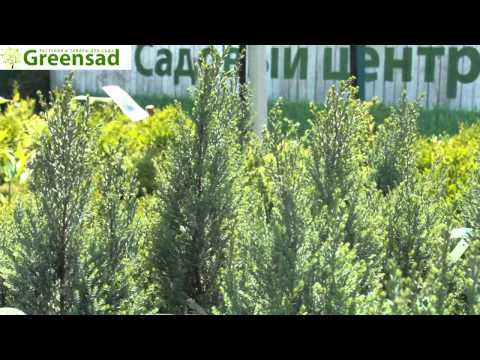

Watch this video on YouTube

